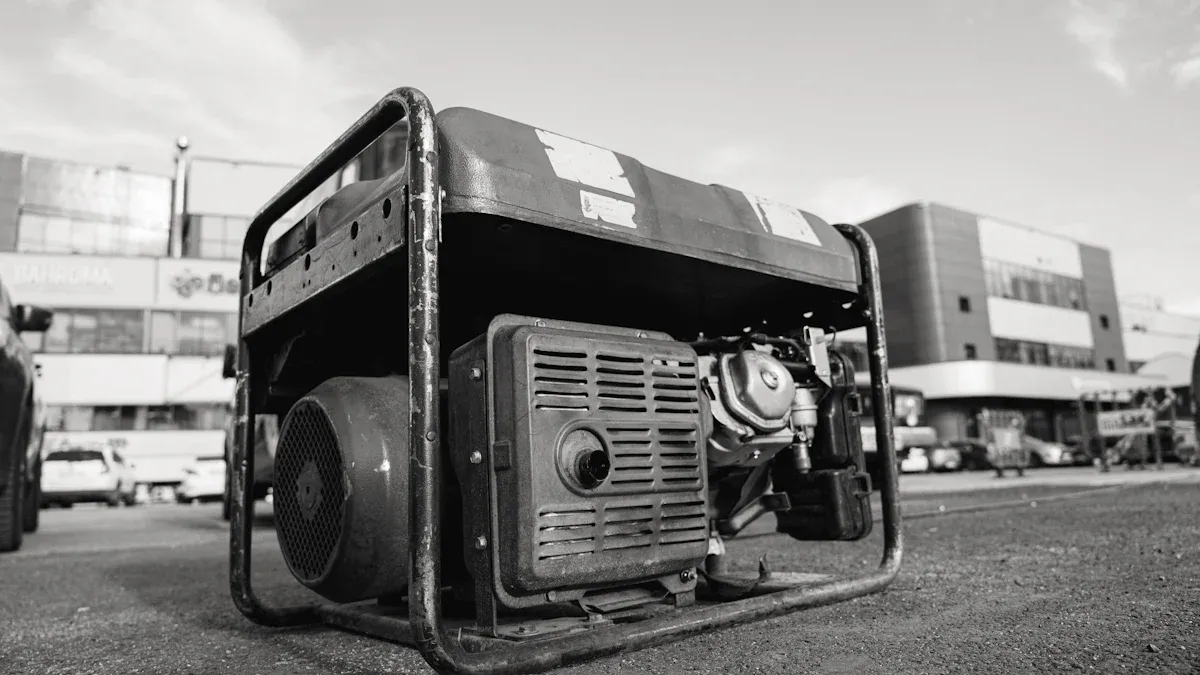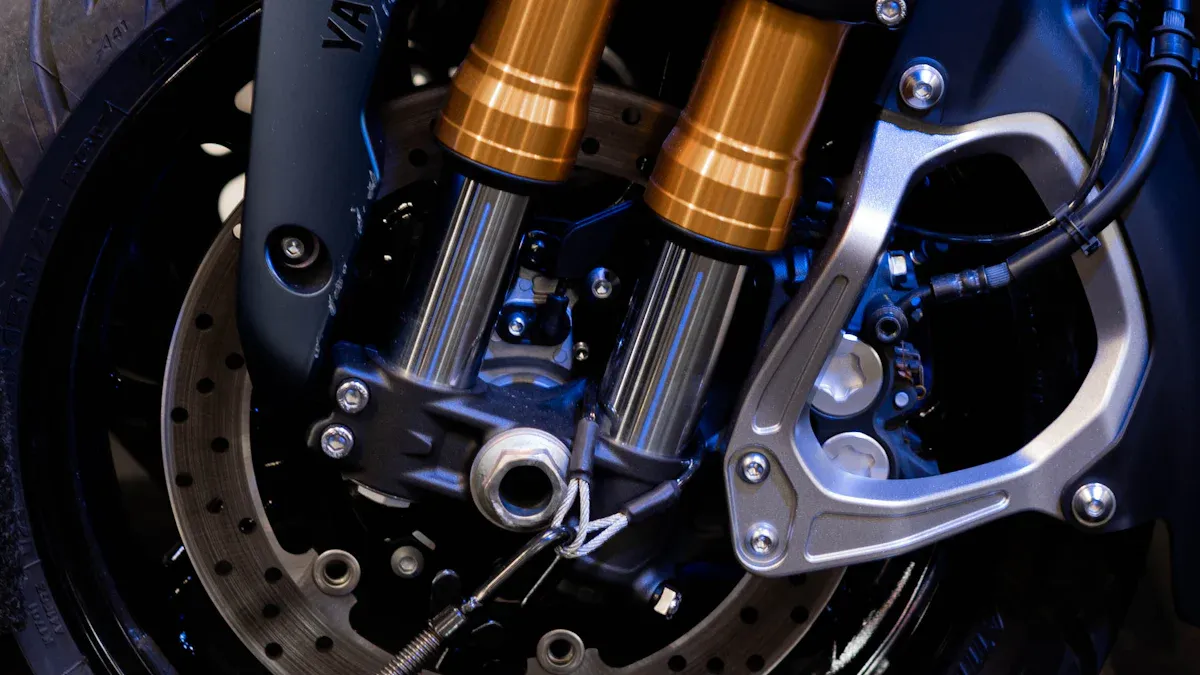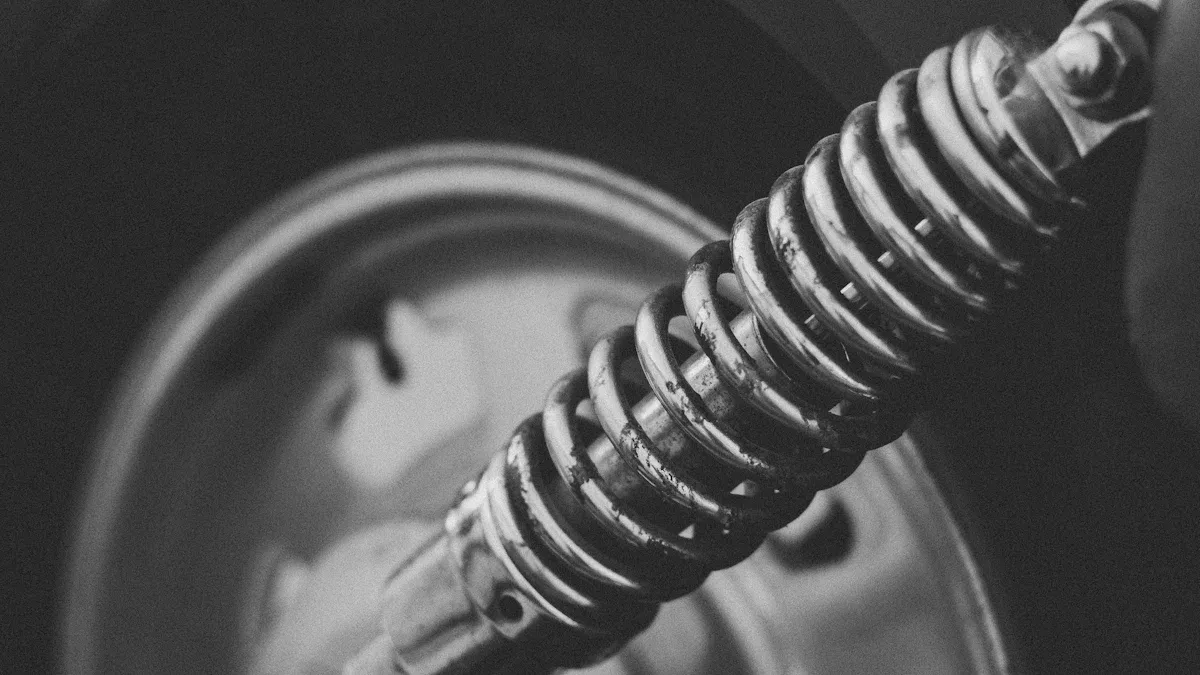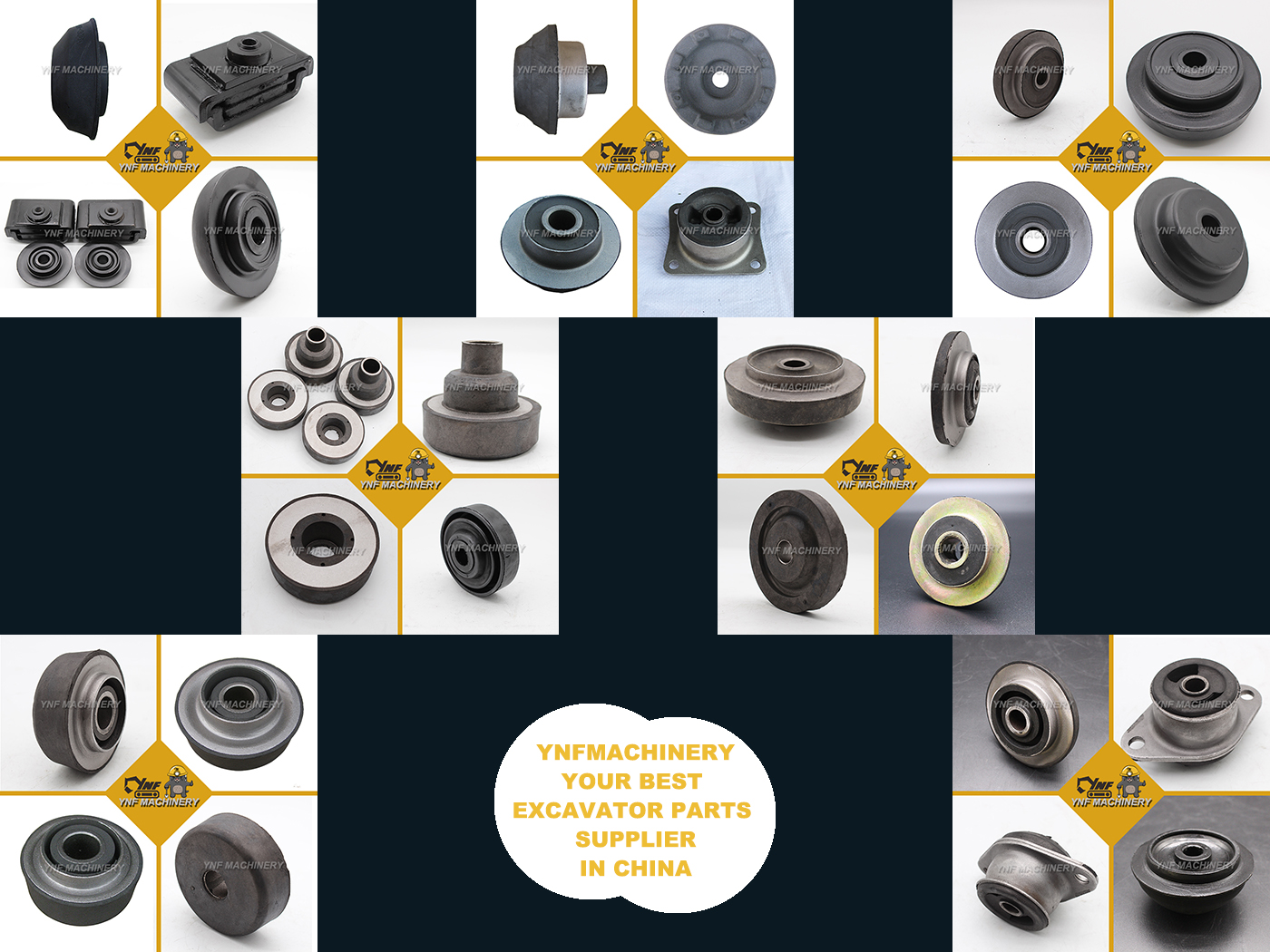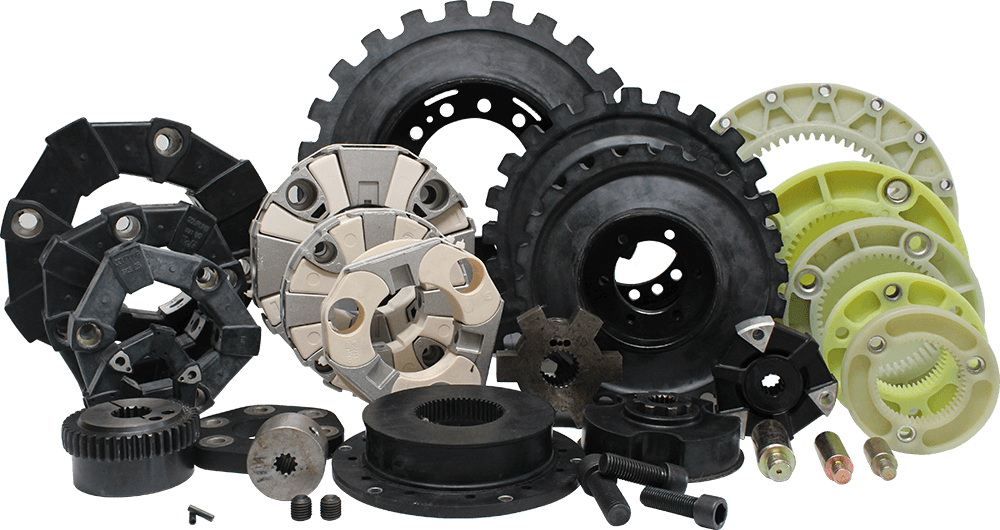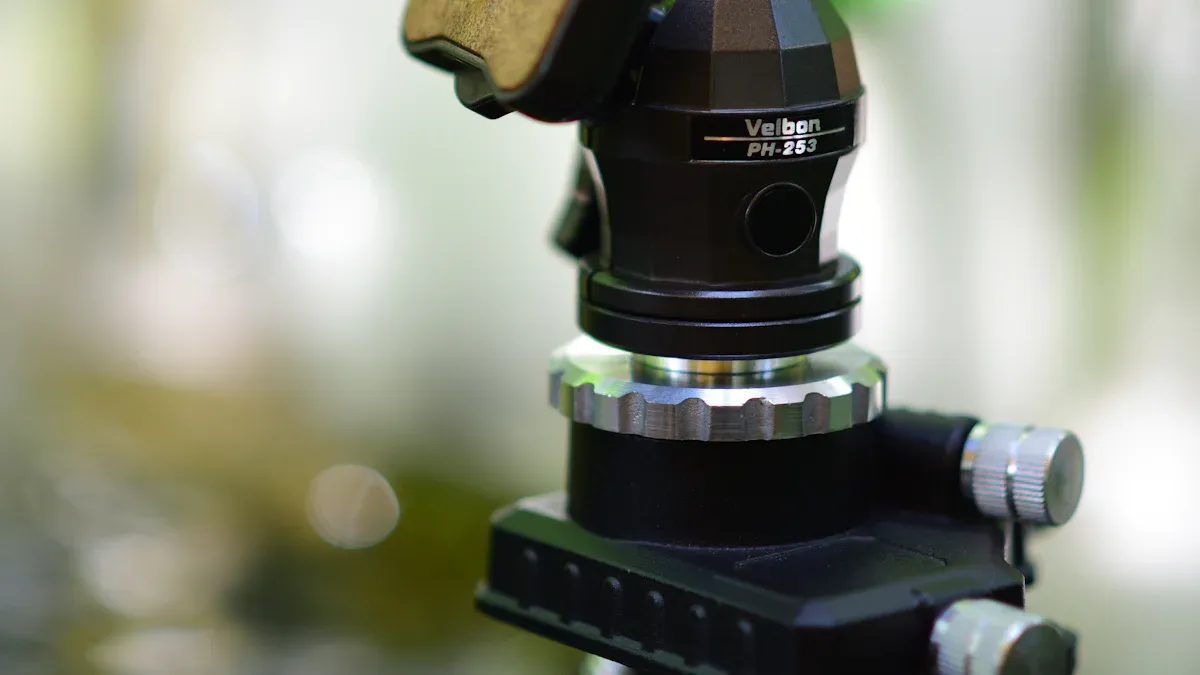
Selecting the right antivibration mounts means you need to match their features to your equipment’s weight, vibration pattern, and where they will be used. If you choose the right antivibration mounts, you protect machines by keeping vibrations away and lowering the chance of damage. This choice makes things safer, helps you avoid repairs, and lets equipment last longer. Engineers use research in materials science to make antivibration mounts that work well in different places. You should look closely at load distribution, vibration details, and the mounts’ material properties for the best results.
Key Takeaways
Know how much your equipment weighs and how the weight is spread out. Figure out how much weight each anti-vibration mount must hold. This helps the mounts work better.
Pick the right size for the mounts and where to put them. Put the mounts where they can hold the most weight. This helps stop vibrations well.
Learn about your equipment’s vibration pattern. Measure how often and how strong the vibrations are. This helps you pick the best vibration isolator for your needs.
Think about things like temperature and humidity. Choose mounts that can handle the place where your equipment will be used.
Ask experts or use special tools if you need help. Getting advice from professionals can help you pick the right anti-vibration mounts for your equipment.
Equipment Specifications
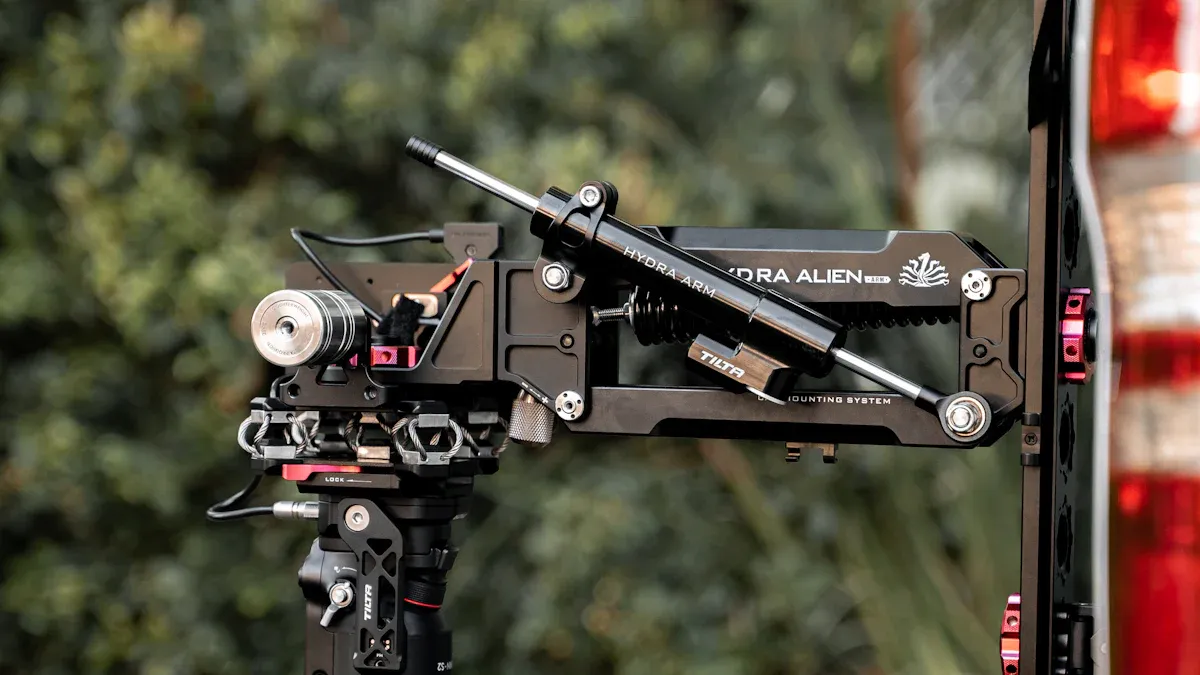
Weight and Load Distribution
First, you need to know your equipment’s details. Start by finding out how much your machine weighs. Follow these steps to figure out the right load for each anti-vibration mount:
Find your equipment’s total weight in kilograms.
Count how many mounts you will use.
Divide the total weight by the number of mounts. This shows how much weight each mount holds.
Check if the weight is spread out evenly. If it is not, change the load for each mount based on where the weight sits.
For example, if your machine weighs 800 kg and you use four mounts, each mount should hold 200 kg. If the weight is not even, some mounts need to hold more. Always look at the center of gravity. If the weight is uneven, it can cause more vibration and damage. Make sure your equipment is level. Use a clean, flat surface when you install it. This helps each mount work well.
Tip: Do not put too much weight on a mount. Too much weight makes it worse at stopping vibration and can break it early.
Size and Placement
Picking the right size and spot for anti-vibration mounts depends on a few things. Use this table to help you choose:
Consideration | Description |
|---|---|
Equipment specifications | Look at size and weight to pick the number and size of mounts. |
Location of equipment | The support surface and where you put the equipment matter. |
Vibration excitation | The speed and movement of your machine change vibration and mount choice. |
Type of building | Industrial or residential buildings need different vibration and sound isolation. |
Environmental considerations | Think about temperature and rust, especially for outdoor equipment. |
Special requirements | Check for special needs like connections or alignment that change load capacity. |
Put mounts where they hold the most weight and stop the most vibration. Make sure each mount matches the load it needs to hold. If you do these things, you will not overload the mounts and your equipment will stay safe.
Vibration Profile and Isolation
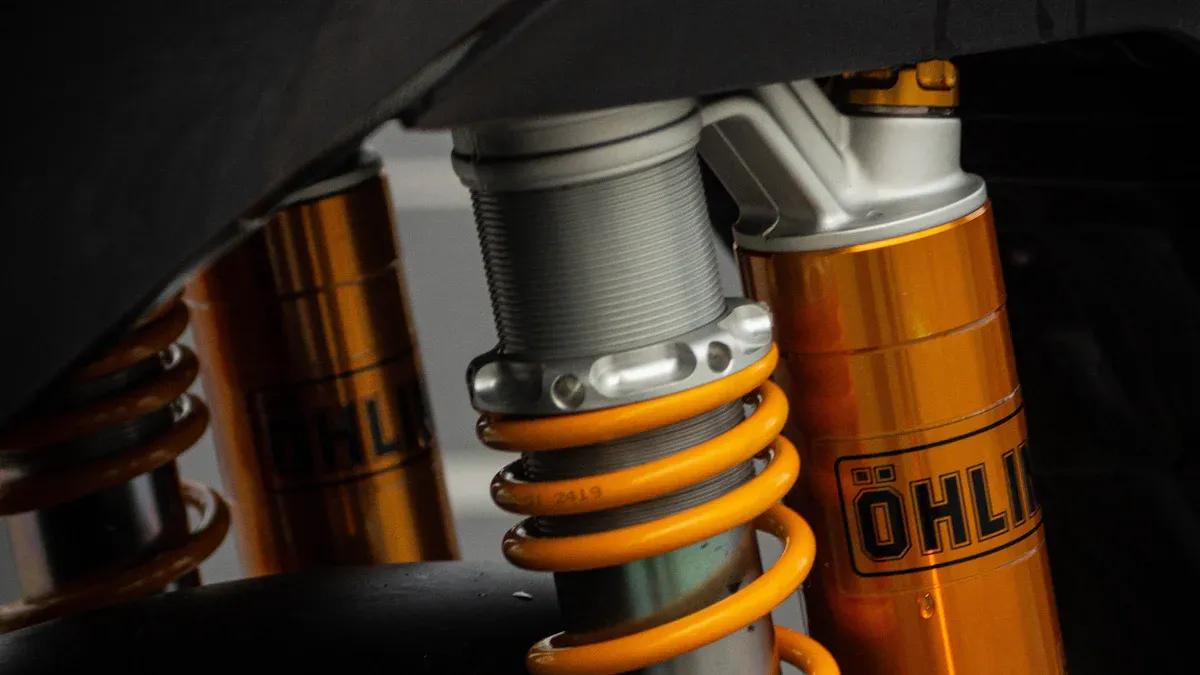
Vibration Frequency and Amplitude
Before you pick a vibration isolator, you need to know how your equipment vibrates. First, measure how fast and how much your equipment shakes. Most machines in factories work at many different speeds. You can look at this table to see some common speeds:
Frequency Range (Hz) | Description |
|---|---|
0.5 Hz to 15 kHz | This is the usual range for machines. It changes with the type of machine and what problems you check for. |
High-speed gearboxes or turbines | These might need sensors that can measure even higher speeds. |
Amplitude shows how far your equipment moves when it vibrates. If the amplitude is high, you need a vibration isolator that is stiffer. This helps keep the equipment from moving too much. It also helps stop rocking and makes the vibration isolator work better. If you put vibration isolators farther apart, your equipment can be more stable.
Amplitude changes how vibration isolators do their job.
Stiffer vibration isolators lower amplitude and make rocking happen faster, so vibrations go away sooner.
Putting vibration isolators farther apart can help stop your equipment from tilting.
When you choose a vibration isolator, make sure its stiffness and damping match your equipment’s vibration speed and amplitude. This helps you get the right amount of vibration control for your needs.
Static and Dynamic Loads
You need to think about both static and dynamic loads when you pick a vibration isolator. Static loads are the weight your equipment puts on the mount when it is not moving. Dynamic loads are the forces that happen when your equipment is running, like shaking or bumps. Each kind of load changes how the vibration isolator works. For static loads, check if the mount can hold the weight. For dynamic loads, see if the vibration isolator can handle movement and shocks.
Vibration Isolation Efficiency
Vibration isolation efficiency tells you how well a vibration isolator stops unwanted movement. You can check this in a few ways:
Static deflection
Disturbing frequency
Percent of isolation efficiency
Think about how much vibration control you need for your equipment. Use charts to compare different vibration isolators. These charts help you pick the best one for your machine and make vibration control better. Always try to get the highest vibration isolation efficiency. This keeps your equipment safe and helps it last longer.
Operating Environment
Temperature and Humidity
You need to think about how temperature and humidity affect anti-vibration mounts. Materials can change when they get hot or cold. Very high or low temperatures can make a mount feel harder or softer. This can make the mount not work as well to stop vibrations. Some materials are better for cold places. Others are better for hot places.
Material | Temperature Range |
|---|---|
Nitrile | -40°C to 100°C / -40°F to 210°F |
TPE | Max Cont Use Temp: 140˚C / 284˚F |
Very hot or cold weather can change how materials act.
Stiffness and damping can be different in extreme temperatures.
If you use equipment outside or in places with big temperature changes, pick mounts that fit those conditions. Humidity is important too. Water can cause rust or make some materials break down faster. Always check if the mount can handle moisture.
Tip: Pick mounts that are good with temperature and humidity. This helps them last longer and work better.
Chemical Exposure
Many factories and outdoor places have chemicals like oil, grease, or cleaners. These can hurt some anti-vibration mounts. You should choose materials that do not get damaged by chemicals. This keeps your equipment safe.
Material | Chemical Resistance | Temperature Range | Applications |
|---|---|---|---|
Nitrile (NBR) | Excellent | -30°C to +100°C | Automotive, oil-exposed environments |
Neoprene (CR) | Moderate | -40°C to +100°C | HVAC, marine, electrical enclosures |
EPDM | Excellent | -50°C to +130°C | Outdoor mounts, solar, HVAC systems |
Silicone | Good | -60°C to +200°C | Medical, food, high-temp electronics |
If your equipment faces oil or strong chemicals, pick mounts made from Nitrile or EPDM. These materials last longer and keep working even with tough chemicals.
Location Factors
Where you put your equipment changes what kind of anti-vibration mount you need. If you put machines on rooftops, floors, or ceilings, you need to think about vibration and weather. Outdoor places have rain, sun, and dirt. Indoor places may have oil or grease.
Where you put the equipment affects which anti-vibration mount you need.
Vibration mounts must handle things like oil, grease, and very hot or cold weather.
The right mix of materials helps mounts work well and last longer.
Always match the mount to the place you use it. For tough places, YNF Rubber has mounts for outdoor and industrial use. These mounts can handle chemicals, water, and temperature changes. This helps your equipment last longer.
Note: Picking the right mount for your environment keeps your equipment safe and lowers repair needs.
Select Anti Vibration Mounts
Mount Types and Designs
There are many kinds of vibration mounts you can pick from. Each one has a special shape and is made for certain machines. You should know the main types before you choose for your equipment.
Type of Mount | Key Features | Applications |
|---|---|---|
Good adhesion, screw-on damping, TPE Shore 75 A | Heavy machinery, HVAC, generators, air compressors | |
Vibration-mount standoffs | Anti-vibration cushion, male/male and male/female styles, Neoprene rubber Shore 40 | Flight controllers, machinery, HVAC blower motor compartments |
Vibration-mount grommets | Flexibility for vibration and noise damping, Neoprene rubber Shore 60 A | Assemblies within electronics |
Vibration grommet screws | Used with grommets, zinc-plated carbon steel | HVAC blower motor compartments, electronics |
Each vibration mount has its own shape and material. Heavy-duty vibration mounts are best for big machines. Vibration-mount standoffs and grommets are good for smaller devices or electronics. When you pick anti vibration mounts, match the type to what your equipment needs.
Double-acting mounts are a newer kind of design. They have a skeleton in the middle and cross-ribs. This helps control how stiff the mount is when moving. Double-acting mounts work well for fast vibrations. Here is a table to compare double-acting mounts and traditional mounts:
Feature | Double-Acting Mounts | Traditional Mounts |
|---|---|---|
Vibration Isolation Performance | Outperforms in high-frequency range | Less effective in high-frequency range |
Dynamic Stiffness Control | Effectively controls dynamic stiffness | Limited control over dynamic stiffness |
Design Features | Intermediate skeleton and cross-ribs | Standard rubber design |
If your machine runs fast or shakes a lot, double-acting mounts can protect it better. For most normal machines, traditional vibration mounts are usually enough. Always check how your machine vibrates before you decide.
Tip: YNF Rubber has many kinds of vibration mounts. They offer double-acting and special designs. You can find the right anti vibration mounts for any job.
Material and Durometer Rating
The material you pick for your vibration mounts changes how well they stop shaking. Some materials are better for certain jobs. Here is a table to help you see the differences:
Material | Application Type | Key Properties |
|---|---|---|
Rubber | Automotive | Excellent vibration dampening, withstands heat/oils |
Neoprene | Automotive | Good mechanical stress resistance |
Polyurethane | Industrial Machinery | High wear resistance, oil resistant |
EPDM | Industrial Machinery | Extreme temperature resistance |
Silicone | High-temperature settings | Critical vibration damping in high temps |
Rubber and neoprene are used a lot in cars. Polyurethane and EPDM are good for factories. Silicone is best for very hot places. Always match the material to where your equipment is and how much it vibrates.
Durometer rating tells you if the material is hard or soft. This changes how much vibration the mount can stop. Look at this table:
Durometer Rating | Material Type | Vibration Damping Effect |
|---|---|---|
20 – 25 | Soft | Excellent vibration isolation |
40 – 60 | Medium | Balanced load and isolation |
80+ | Hard | Greater load capacity, less vibration damping |
Soft mounts stop the most vibration. Medium mounts balance weight and vibration control. Hard mounts hold more weight but do not stop as much vibration. Pick the right durometer for your equipment’s weight and how much it shakes.
Note: YNF Rubber has vibration mounts in many materials and durometer ratings. You can find the best one for your equipment and where you use it.
Hysteresis Properties
Hysteresis is an important thing in vibration dampeners. It means the material can take in and let out energy as your equipment moves. This helps lower the vibration that gets through the mount.
Hysteresis happens because of how the material’s molecules move.
This lets the mount take in energy each time it vibrates.
Good hysteresis lowers how much your equipment shakes and keeps it steady.
Hysteresis also helps the mount work better near the system’s natural frequency.
When you pick vibration dampeners, look for mounts with good hysteresis. These mounts will keep your equipment safer and help it last longer.
Buying high-performance antivibration mounts might cost more at first. But you save money later because you need fewer repairs and your machines last longer. You also get better performance and less time when your machines are not working.
If you want to pick anti vibration mounts that work best, always check the mount type, material, durometer, and hysteresis. YNF Rubber can help you find the right one for your needs.
Special Requirements
Regulatory and Safety
You have to follow safety rules when picking anti-vibration mounts. These rules keep people and equipment safe. In places like hospitals or airplanes, safety is even more important. You need mounts that meet strict rules. The right vibration isolators help your equipment by stopping unwanted movement. They also protect machines from getting damaged. Cost-effective choices help control vibration and shock, which is very important in risky jobs.
Vibration isolation mounts lower vibrations in heavy-duty equipment.
They take in shock and vibration, keeping your equipment and the area safe.
Choosing the right mount helps your equipment work well and lowers damage risk.
Tip: Always make sure your mounts follow local safety codes and industry rules. This keeps your equipment safe and helps you avoid trouble.
Maintenance Needs
You should think about how much care your anti-vibration mounts need. Some mounts last longer and do not need much care. Others need regular checks or small fixes. The kind of mount changes how often you need to do maintenance.
Mount Type | Maintenance Needs | Characteristics |
|---|---|---|
Rubber Mounts | Low maintenance, cost-effective | Good for light/medium machines, absorbs vibration well |
Spring Mounts | Moderate maintenance, may require adjustments | Excellent for heavy machines, better for low-frequency vibrations |
Composite Mounts | Varies based on application | Customizable properties, suitable for specific needs |
Rubber mounts are good for most jobs and need little care. Spring mounts may need you to check and adjust them sometimes. Composite mounts are made for special jobs, so their care depends on how you use them.
Note: Checking your mounts often helps you find problems early. This keeps your equipment working and lowers repair costs.
Expert Consultation and Selection Tools
If your equipment has special needs or tough vibration problems, you should ask an expert for help. You can use selection tools to make your choice easier. Some tools let you put in your machine’s details and get advice on the best mount.
MountFinder Pro helps you measure vibration and pick the right anti-vibration mount for your machine.
Vibration Isolator Pro lets you do anti-vibration calculations using simple data.
You can also ask YNF Rubber for expert advice. Their team can help you pick the best anti-vibration mounts for your equipment and where you use it.
Tip: For hard jobs, expert help and selection tools make sure you get the right mount. This keeps your equipment safe and working well.
Picking the right anti-vibration mount takes a few steps. First, find out how much your equipment weighs. Make sure the mount can hold that weight. Next, look at how your machine shakes and moves. Match the mount to the vibration type and speed. Think about the temperature and humidity where you use your equipment. Check if there are chemicals nearby that could hurt the mount. Use simple charts to pick the best static deflection and isolation. When you choose the right mount, your machines stay safe. You will hear less noise and spend less on repairs. Use easy checklists to help you decide. Ask experts if you are not sure. YNF Rubber can help you find good mounts. They keep your equipment safe and steady.
FAQ
What is the best way to measure my equipment’s vibration?
You can use a vibration meter or sensor. Place it on your equipment. Read the frequency and amplitude. Write down the numbers. This helps you choose the right anti-vibration mount.
How often should I check my anti-vibration mounts?
Check your mounts every six months. Look for cracks, wear, or loose parts. Replace damaged mounts quickly. Regular checks keep your equipment safe.
Which material works best for outdoor equipment?
EPDM rubber works well outdoors. It resists water, sunlight, and chemicals. YNF Rubber offers EPDM mounts for outdoor use. These mounts last longer in tough weather.
Can I install anti-vibration mounts myself?
Yes, you can install mounts if you follow the instructions. Use the right tools. Make sure each mount supports the correct weight. If you need help, ask YNF Rubber for advice.
Where can I buy high-quality anti-vibration mounts?
You can buy high-quality anti-vibration mounts from YNF Rubber. They offer many types and materials. Their experts help you choose the best mount for your equipment.


